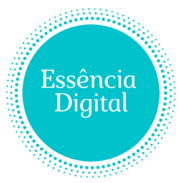Why Social Media Is a Non-Negotiable Tool for Today’s Freelancers
Social media has evolved from a platform for sharing personal updates to a powerful engine for professional growth. For freelancers, it’s not just about visibility; it’s about opportunities, connections, and building a recognizable personal brand. When used strategically, social media doesn’t just fill your client pipeline—it can position you as an industry leader, diversify your lead sources, and future-proof your business. This guide will walk you through practical, proven steps to leverage social media for consistent freelance growth.
Step 1: Define Your Brand and Target Audience
- Know your niche: What services do you offer? Who most needs them?
- Craft your message: What makes your approach unique or valuable? Summarize this in one compelling sentence.
- Visual identity: Choose colors, fonts, imagery, and tone that reflect your niche and professionalism.
- Ideal client persona: Outline your dream client’s job title, industry, values, and pain points.
Everything you post or share should speak directly to these targets—clarity attracts the right attention.
Step 2: Choose the Right Platforms for Your Field
- LinkedIn: Essential for B2B services, consultants, writers, designers, and marketers.
- Instagram: Best for visual storytellers—designers, illustrators, photographers, and lifestyle freelancers.
- Twitter (X): Great for real-time industry conversations, sharing tips, and networking with leaders/influencers.
- Facebook: Useful for joining and contributing to active groups in your industry.
- TikTok/YouTube: For educators, creators, and anyone comfortable on camera, these platforms can drive massive reach with how-tos and portfolio showcases.
- Niche networks: Dribbble, Behance, Medium, and others for targeted portfolios.
Start with 1–2 platforms, master their rules and culture, and only expand once you have momentum.
Step 3: Build a Stand-Out Profile and Portfolio
- Professional bio: Concise, client-centered, and keyword-rich (e.g., “UI/UX Designer for SaaS Startups”).
- Links to your work: Portfolio, website, case studies—easy to find, visually appealing, and mobile-friendly.
- Pinned content/highlights: Use this space for testimonials, signature projects, or “about me” videos.
- Consistency: Unify visuals and messaging across every platform.
Think of your profile as your digital storefront—make the right first impression every time.
Step 4: Publish Valuable, Consistent Content
- Educational posts: Share quick tips, industry secrets, or how you solve common client problems.
- Behind-the-scenes: Show your work process, workspace, or thought process for authenticity.
- Case studies and testimonials: Demonstrate results and client satisfaction.
- Personal stories: Show your journey, lessons learned, or milestones—people connect with people.
- Engagement tools: Ask questions, run polls, hold AMAs (Ask Me Anything), share resources.
- Posting cadence: Consistency beats frequency; aim for at least 2-3 quality posts per week per platform.
You’re building trust—be generous, approachable, and always relevant.
Step 5: Actively Engage and Network
- Respond to comments and DMs: Every interaction is a chance to build rapport and showcase professionalism.
- Comment meaningfully on industry leaders’ posts: Thoughtful engagement can expose you to their audience.
- Join (and contribute to) relevant groups/chats: Offer genuine advice, answer questions, and share resources—not just self-promotion.
- Collaborate with peers: Cross-promote services, share each other’s portfolios, or co-host webinars/podcasts.
- Follow up: If you get an inquiry, respond quickly and thoughtfully, and nurture the relationship beyond the initial exchange.
Networking is activity-based—show up, give first, and sales will follow.
Step 6: Utilize Social Proof and Client Successes
- Share testimonials regularly: Pin positive reviews, client quotes, or video feedback on your profile.
- Showcase projects with measurable results: Visuals plus stats (e.g., “Website redesign improved conversions by 30%”).
- Tag clients and partners: With permission, celebrate collaborations and boost each other’s visibility.
Nothing is more convincing than happy clients speaking for you.
Step 7: Refine Strategy with Analytics
- Monitor engagement: Analyze which posts generate the most likes, comments, shares, and profile visits.
- Test content types: Try videos, carousels, stories, live Q&As, polls—and see what resonates.
- Adjust schedule: Post when your audience is most active (platform analytics can show this).
- Track leads: Keep a log of inbound inquiries and where they originated.
Data-driven iteration makes your social media presence one of your most dependable lead sources.
Step 8: Manage Time and Avoid Burnout
- Batch content creation: Set aside a weekly “content day” to draft, design, and schedule posts.
- Use scheduling tools: Buffer, Hootsuite, Later, etc., to post automatically and maintain consistency.
- Set boundaries: Designate specific times for social media and avoid endless scrolling.
Remember: You control the tools—don’t let them control you.
Step 9: Explore Paid Ads and Advanced Strategies (Optional)
- Start small: Consider targeted ads on LinkedIn, Instagram, or Facebook to promote a lead magnet, signature offering, or portfolio highlight.
- Retarget visitors: Use tracking pixels to re-engage people who’ve visited your site or profile.
- Content partnerships: Guest post or collaborate with brands/groups your audience already trusts.
Paid/social amplification works best once your organic presence is strong.
Common Mistakes to Avoid
- Inconsistent branding/messaging across platforms.
- Only posting promotional content—educate, inspire, and interact, don’t just sell.
- Ignoring DMs or comment threads—follow up and follow through.
- Neglecting analytics—guesswork wastes time and opportunity.
- Spreading yourself too thin—focus where your best clients already hang out.
Conclusion: Social Media as Your Business Growth Engine
Social media is no longer optional—it’s the modern freelancer’s marketing HQ. By defining your strategy, showing your value, engaging consistently, and refining based on real-world feedback, you’ll not only attract clients you’ll attract the right kind of clients, build lasting relationships, and set yourself up for long-term freelance success.

